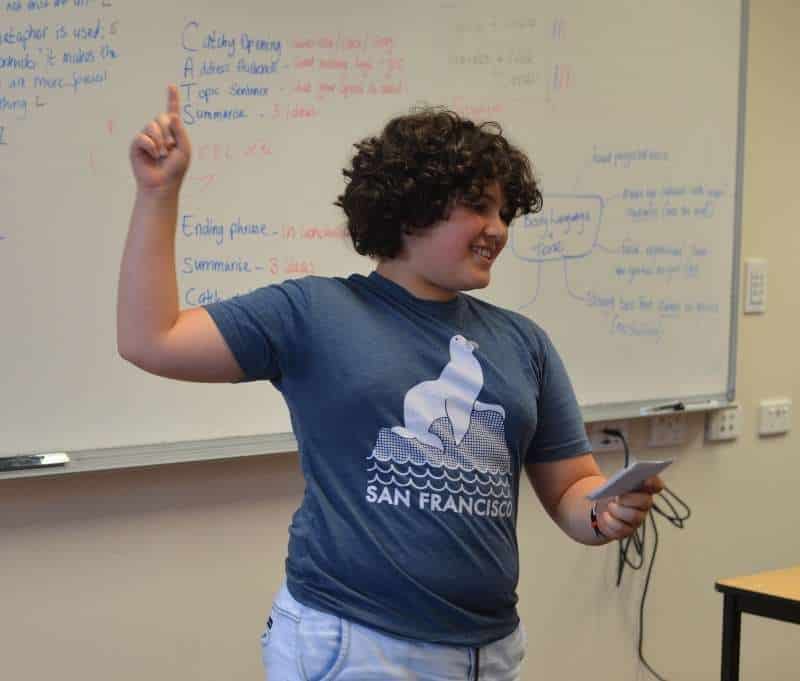Speaking skills develop by doing!
1 March 2021
By Chris Giacoumakis
One important key to improving your child’s linguistic ability is to provide as many opportunities for interaction with others on a range of topics (Duchesne and McMaugh, Educational Psychology, 2016). This can be done in the family home, in various social settings – both inside and outside the conventional classroom.
Let’s start from the beginning….
Language is all about communicating. Given parents are a child’s first teacher, language development in children may improve tremendously if they have abundant opportunities to interact with each other, and help their child connect with their surrounding environment.
The Early Years
From the minute children enter the world, they are relying on stimulation from their caregivers to develop crucial communication skills. Their brain is yet to be fully developed – it is literally in its most primitive stage with another two solid decades to go before it is deemed “developed”. Given this, it relies heavily upon the external environment to help build healthy neural connections and pathways for many things – particularly expressive and receptive language. This is where parents need to channel their inner Broadway performer. Bring out your inner clown, narrator and talk show host – sing, dance, tell jokes (laugh at your own if you must!), read, talk to your child – and the rewards will be invaluable.
Schooling Years and Beyond
As children transition out of the infancy years and into the schooling stage and beyond, the conversations need to keep flowing and shifting up a few gears! The focus goes from the parent being the main provider of information to the child now taking on a more active role of creating, sharing and sequencing content. This may sound complicated, but children do this organically and rather well – especially through sharing stories about their day, things they learnt or witnessed, and discussing their friendships.
Another way to hone in on language development is reading! Reading is vital to breathe life into our ability to form, build upon, use and retain language – once again building more neural pathways. A regular reading practice not only builds the neural pathways, but prevents them from deteriorating too. Make reading a part of your family’s daily routine, discussing the characters, the moral message of the story, prediction of events or a character’s fate, or eliciting a simple critique of the book – these are all incredibly effective and enjoyable tools. Not only are we building language skills, but creating strong bonds through quality time and a shared experience between caregiver and child. This is a great time to keep those books handy: visit your local library, swap with friends, or find your closest street library.
The Gift that keeps on giving
The gift of fostering your child’s language is not just about grammatical structures, enunciation, pronunciation or building a vastly sophisticated vocabulary – interactive experiences also help shape our children’s ability to connect and communicate with others effectively. Every time a child plays with their peers, they inevitably use different language skills to negotiate, read other’s emotions as well as manage their own.
For example, “Bodrova and Leong (2005) found that quality play experience in pre-school years is related to improved memory skills, language development and self-regulation, and metacognition in particular, which are necessary for problem-solving and creativity”(Duchesne and McMaugh, Educational Psychology, 2016).
Playing outside, in nature, has also proven to be effective. When children find themselves immersed in nature, they use their senses to connect with what they see, their curiosity is enhanced as they investigate and become a more active participant in their learning journey. This immersive experience ultimately empowers children by giving them more autonomy and accountability for their own learning. Naturally, caregivers/teachers are there to support the process as opposed to directing it such as that in a more conventional classroom setting.
Some ‘learn language by doing’ tips are:
- Scavenger hunts – Children can be given a list of items that they need to locate and identify. This can be outside or around the home. Students will have a ball learning new words, colours, textures as well as problem-solving skills.
- Building a cubby – Students can work in a team whereby they use their imaginations and communication skills to work together and build a cubby with very basic household or outdoor objects.
- Role-play – a great way to encourage and develop active listening, empathy, working as a team, learning about the world and using new language to express oneself. Out of character may help stunts feel more comfortable with stepping outside of their comfort zone.
- Using music – get those tunes cranking and get your vocal cords warmed up. Belting out a few tunes with a karaoke contest is such a fun and great way for children to acquire new vocabulary, rhythm, intonation in their linguistic world. Songs often repeat information too, so this can help cement new words in place a little faster!
We at Speaking Schools greatly value and implement the ‘learning by doing’ approach wholeheartedly when teaching our Public Speaking and Debating programs. We have witnessed, and continue to witness, that interactive, student-centred and practical learning may help lay the foundations for a child’s future – affording them the means and tools to flourish in both intrapersonal and interpersonal relationships as well as fortifying their language, literacy and creativity.



